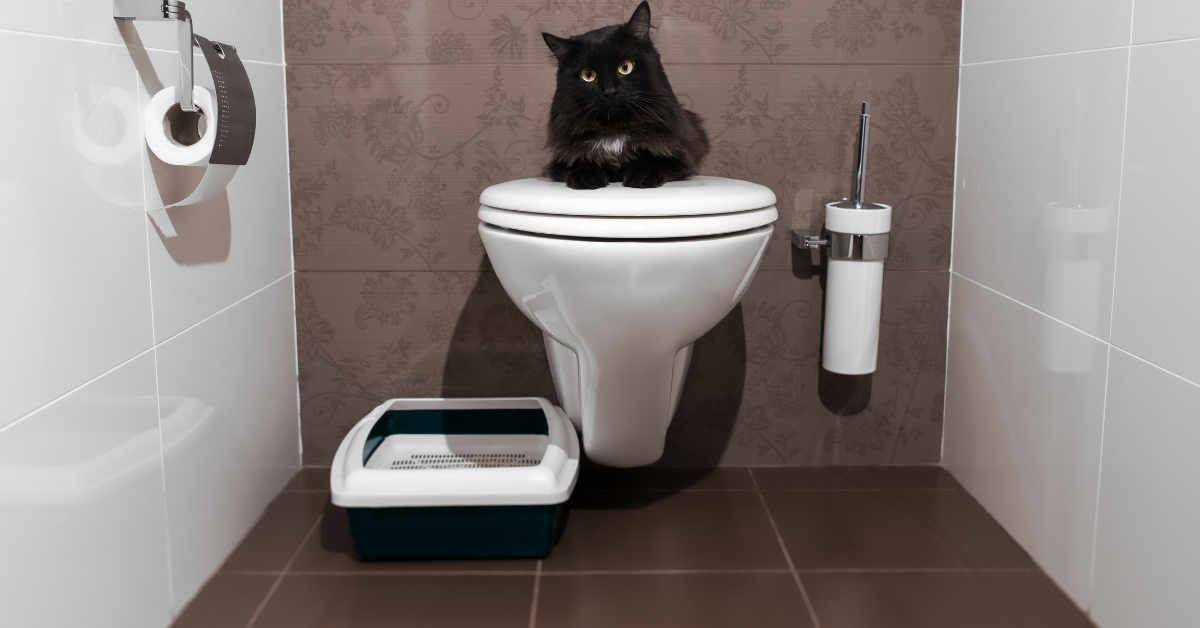Dangers of Flushing Cat Poop Down Your Toilet - Avoid Possible Problems
Dangers of Flushing Cat Poop Down Your Toilet - Avoid Possible Problems
Blog Article
The article following next involving Can You Flush Cat Poop Down The Toilet? is exceedingly fascinating. You should give it a look.

Intro
As cat owners, it's vital to be mindful of exactly how we deal with our feline buddies' waste. While it may appear hassle-free to flush feline poop down the bathroom, this technique can have destructive effects for both the environment and human health.
Environmental Impact
Flushing cat poop presents unsafe pathogens and parasites into the supply of water, posturing a considerable risk to marine ecosystems. These contaminants can negatively impact aquatic life and compromise water quality.
Health Risks
Along with ecological issues, purging pet cat waste can additionally present wellness risks to humans. Pet cat feces may have Toxoplasma gondii, a bloodsucker that can create toxoplasmosis-- a possibly serious disease, especially for expecting females and individuals with damaged body immune systems.
Alternatives to Flushing
Fortunately, there are safer and a lot more liable ways to deal with cat poop. Take into consideration the adhering to options:
1. Scoop and Dispose in Trash
One of the most typical technique of taking care of feline poop is to scoop it right into an eco-friendly bag and throw it in the garbage. Make sure to make use of a devoted trash scoop and throw away the waste quickly.
2. Use Biodegradable Litter
Opt for eco-friendly feline trash made from products such as corn or wheat. These trashes are eco-friendly and can be securely taken care of in the trash.
3. Hide in the Yard
If you have a lawn, consider burying cat waste in an assigned location far from vegetable gardens and water resources. Be sure to dig deep adequate to avoid contamination of groundwater.
4. Set Up a Pet Waste Disposal System
Purchase a pet dog waste disposal system specifically developed for feline waste. These systems use enzymes to break down the waste, reducing odor and ecological impact.
Verdict
Responsible animal possession prolongs beyond providing food and shelter-- it also includes proper waste administration. By refraining from flushing pet cat poop down the commode and going with different disposal techniques, we can decrease our environmental footprint and protect human health and wellness.
Why Can’t I Flush Cat Poop?
It Spreads a Parasite
Cats are frequently infected with a parasite called toxoplasma gondii. The parasite causes an infection called toxoplasmosis. It is usually harmless to cats. The parasite only uses cat poop as a host for its eggs. Otherwise, the cat’s immune system usually keeps the infection at low enough levels to maintain its own health. But it does not stop the develop of eggs. These eggs are tiny and surprisingly tough. They may survive for a year before they begin to grow. But that’s the problem.
Our wastewater system is not designed to deal with toxoplasmosis eggs. Instead, most eggs will flush from your toilet into sewers and wastewater management plants. After the sewage is treated for many other harmful things in it, it is typically released into local rivers, lakes, or oceans. Here, the toxoplasmosis eggs can find new hosts, including starfish, crabs, otters, and many other wildlife. For many, this is a significant risk to their health. Toxoplasmosis can also end up infecting water sources that are important for agriculture, which means our deer, pigs, and sheep can get infected too.
Is There Risk to Humans?
There can be a risk to human life from flushing cat poop down the toilet. If you do so, the parasites from your cat’s poop can end up in shellfish, game animals, or livestock. If this meat is then served raw or undercooked, the people who eat it can get sick.
In fact, according to the CDC, 40 million people in the United States are infected with toxoplasma gondii. They get it from exposure to infected seafood, or from some kind of cat poop contamination, like drinking from a stream that is contaminated or touching anything that has come into contact with cat poop. That includes just cleaning a cat litter box.
Most people who get infected with these parasites will not develop any symptoms. However, for pregnant women or for those with compromised immune systems, the parasite can cause severe health problems.
How to Handle Cat Poop
The best way to handle cat poop is actually to clean the box more often. The eggs that the parasite sheds will not become active until one to five days after the cat poops. That means that if you clean daily, you’re much less likely to come into direct contact with infectious eggs.
That said, always dispose of cat poop in the garbage and not down the toilet. Wash your hands before and after you clean the litter box, and bring the bag of poop right outside to your garbage bins.
https://trenchlesssolutionsusa.com/why-cant-i-flush-cat-poop/

I recently found that write up on How to Dispose of Cat Poop and Litter Without Plastic Bags when doing a search on the internet. Sharing is nice. Helping others is fun. Thank you for your time. Please come visit our blog back soon.
Click Here Report this page